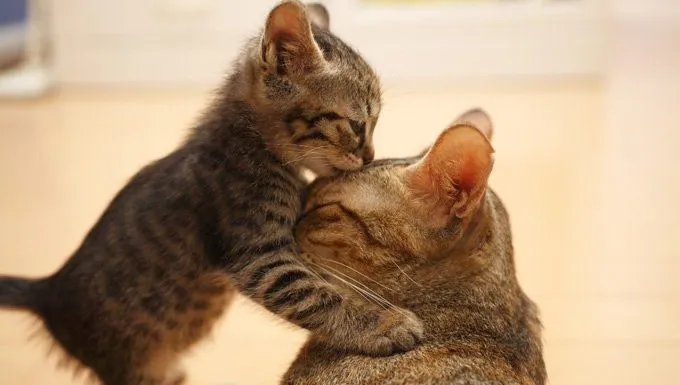Hello, fellow feline aficionados and curious cat parents! Cats are enigmatic creatures, and their unique way of expressing themselves often leaves us intrigued. Tail twitching and chin rubbing are just two of the many gestures in their complex repertoire of body language. Today, we’re diving into the fascinating world of cat communication, decoding what these gestures mean, and learning how to respond to our furry friends in the language they understand best.
The Art of Tail Twitching
Tail Language 101
Cats are renowned for their expressive tails, and tail twitching is one of their most intriguing signals. Understanding this language can give you valuable insights into your cat’s mood and intentions.
Tail Twitching: The Types
The Quiver
A gentle, rhythmic twitching at the tip of the tail often signifies excitement or anticipation. Your cat might be getting ready to pounce on a toy or engage in play.
The Lash
A more vigorous, side-to-side tail movement can indicate annoyance or agitation. It’s like a polite way of saying, “Back off, please.”
The Puff
When the tail puffs up like a bottlebrush, your cat is probably feeling threatened or fearful. It’s a defense mechanism designed to make them appear larger.
The Language of Chin Rubbing
Affection and Ownership
Chin rubbing is a delightful and endearing behavior in cats. When your feline friend rubs their chin against you or an object, they are not only showing affection but also marking their territory.
The Scent Marking Ritual
Cats have scent glands in their chin, and when they rub against something, they’re leaving behind their scent. This scent marking is a way for them to declare, “This is mine,” and create a familiar, comforting environment.
Veterinary and Government Insights
Veterinarian Perspective
Veterinarians emphasize the importance of understanding cat body language to strengthen the bond between cats and their human companions. Recognizing these subtle cues can help prevent misunderstandings and conflicts.
Government Recommendations
Government bodies responsible for animal welfare often stress the significance of responsible pet ownership, which includes understanding and responding appropriately to your cat’s behavior and needs.
Responding to Your Cat’s Signals
Tail Twitching Tips
The Quiver
Get ready to play and engage your cat in interactive games.
The Lash
Give your cat space and allow them to calm down if they seem agitated.
The Puff
Assess the situation and remove any potential stressors from your cat’s environment.
Chin Rubbing Rituals
Chin Scratches
Respond to chin rubbing with gentle chin scratches or head rubs to reciprocate affection.
Respect Their Territory
If your cat is marking their territory, avoid cleaning or removing these marks as it provides them comfort.
The Final Purrspective
Building a Deeper Connection
In conclusion, understanding cat body language, including tail twitching and chin rubbing, is like unlocking the secrets to your cat’s emotions and intentions. By responding appropriately and reciprocating their affection, you can strengthen your bond with your feline companion and create a harmonious, purr-fect relationship.
- Best Datanyze Alternatives for 2025 - April 19, 2025
- Best Leadfeeder Alternatives for 2025 - April 18, 2025
- Best LeadScrape Alternatives for 2025 - April 18, 2025



